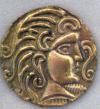Solar Radiation Alert, Shock Warning With Real Time Tool

Astrophysicists from the University of New Hampshire’s Space Science Center (SSC) have created the first online system for predicting and forecasting the radiation environment in near-Earth, lunar, and Martian space environments. The near real-time tool will provide critical information as preparations are made for potential future manned missions to the moon and Mars.
“If we send human beings back to the moon, and especially if we’re able to go to Mars, it will be critical to have a system like this in place to protect astronauts from radiation hazards,” says associate professor of physics Nathan Schwadron of the UNH Institute for the Study of Earth, Oceans, and Space (EOS), which houses the SSC.
Schwadron is the lead developer of the new web-based tool known as PREDICCS, which for the first time integrates numerical models of space radiation, a host of real-time measurements being made by satellites currently in space, and “propagation codes” that can accurately project radiation levels out as far as Mars. The tool was made possible through NASA’s Living With A Star (LWS) Targeted Research and Technology program.
The website provides updates of the radiation environment on an hourly basis and archives the data weekly, monthly, and yearly. This historical record provides a clear picture of when a safe radiation dose limit is reached for skin or blood-forming organs, for example.
Says Schwadron, “What we really need to know is how hazardous this cycle of radiation is. How often do we see large events that have significant risk associated with them? Those questions can only be answered if you’re continually building up the database of events and the risk associated with them.”
He notes further that the space science community has traditionally viewed radiation hazards in space as a “showstopper” and that until PREDICCS there has never been an extremely accurate, nearly real-time means of challenging that.
“There hasn’t been enough work done to ask, ‘Is it really a showstopper and, if so, why, and what are the problems we need to solve so that it isn’t a showstopper?’”
That work has now been done, and the proof is in PREDICCS.
Among other satellite measurements used by PREDICCS are solar energetic particle data from the Cosmic Ray Telescope for the Effects of Radiation
(CRaTER) instrument on NASA’s Lunar Reconnaissance Orbiter. CRaTER, whose principal investigator is Harlan Spence, director of EOS and a co-developer of PREDICCS, has made the most accurate and comprehensive measurements of radiation at the moon since the dawn of the space age.
During several recent large solar events in which the sun, waking from an unusually long quiet period, sent billions of tons of high-energy particles rippling through space, the radiation levels measured by CRaTER as it orbited the moon were matched almost perfectly by PREDICCS.
“For the whopping solar events of January 23 and March 27 of this year, our predictions seem to be within 20 to 30 percent of what was observed, which is incredible. These types of highly accurate comparisons have never been made before,” Schwadron says.
CRaTER, which gauges radiation doses using a high-tech material called “tissue-equivalent plastic” that mimics human muscle, has thus not only provided the validation that PREDICCS models are accurate, but has done so in the context of how the radiation data would impact human beings on the moon or on a mission to Mars.
“We needed to accurately assess what the biological impacts are to make the best quantitative comparisons between models and observations,” says Schwadron, “and having a system like this in place now is sort of like flying a trial balloon in preparation for a return to the moon and a trip to Mars.”
To make its radiation assessments, PREDICCS integrates two radiation environment models, including the Earth-Moon-Mars Radiation Environment Module (EMMREM) developed at UNH.
“Complex applications like EMMREM are able to leverage observations from all relevant space missions,” notes NASA’s Madhulika Guhathakurta, LWS program scientist.
A blog has been developed for PREDICCS that allows people to understand how the tool works and how to interpret the various graphs of radiation dosage.
Note’s Schwadron, “For the first time people are able to see the affects of space radiation playing out in near real-time, and this opens a new window to an otherwise invisible world.”
To view the PREDICCS website, visit http://prediccs.sr.unh.edu/.
The goal of the LWS is to develop the scientific understanding needed for the U.S. to effectively address those aspects of the connected sun-Earth system that may affect life and society. The program’s Targeted Research and Technology objectives can be achieved by data analysis, theory and modeling, and the development of tools and methods.
The tool measures radiation for the Moon and Mars as well as the Earth.
Credit: PREDICCS
The University of New Hampshire, founded in 1866, is a world-class public research university with the feel of a New England liberal arts college. A land, sea, and space-grant university, UNH is the state’s flagship public institution, enrolling 12,200 undergraduate and 2,300 graduate students.
Radiation Hazards from Cosmic Rays
Galactic Cosmic Rays (GCRs) pose the most serious chronic radiation hazard for long duration interplanetary missions to Mars, particularly in solar minimum activity conditions when approximately 10 cm of aluminum shielding may be needed to bring the radiation dose down to the current limit for astronauts in low-Earth orbit [Davis et al., 2001]. Most of the problem lies in the < 1 GeV/nuc GCRs, with a significant contribution from heavy nuclei, despite their low intensities. Although the GCR problem is less severe during solar maximum, large SEP events are more frequent, raising the frequency of acute exposure.
The following parametric tables for dose and dose equivalent in the Mars atmosphere from GCRs were calculated with the HZETRN 2005 model at the University of Tennessee:
Anomalous Cosmic Rays (ACRs) are less energetic and pose a lower radiation hazard, but they are trapped in a third radiation belt in the near Earth environment and may have sufficient energy to pose a threat to lightly shielded electronic systems, and possibly to astronauts during extra vehicular activity, if inside an ACR radiation belt.
Credit: PREDICCS
The long-term cosmic-ray (CR) modulation cycle has a well known ~11-year variation with solar cycle, and a 22-year cycle coinciding with the polarity cycle of the solar magnetic field. The CR time profiles are more flat-topped (sharply peaked) around solar minimum when the interplanetary magnetic fields have a positive (negative) polarity in the northern hemisphere. This phenomenon is likely due to CR gradient, curvature, and current sheet drift transport, which depends on the sign of the magnetic field polarity [e.g.,Kota and Jokipii, 1983; Potgieter and Moraal, 1985]. In the beginning of a positive polarity cycle, the cosmic-ray intensity can increase quickly over a 1-2 year time scale so that relatively early in the cycle, the CR intensity and associated radiation hazard reach maximum levels.
Abrupt steps in GCR intensities occur due to outward propagating clusters of merged interaction regions (MIRs) formed from interplanetary CMEs and shocks that merge into global merged interaction regions (GMIRs) beyond ~ 10 AU. GMIRs act as barriers against CRs causing short-term (~1 year) variations in radiation exposure.
Anyone can join.
Anyone can contribute.
Anyone can become informed about their world.
"United We Stand" Click Here To Create Your Personal Citizen Journalist Account Today, Be Sure To Invite Your Friends.
Before It’s News® is a community of individuals who report on what’s going on around them, from all around the world. Anyone can join. Anyone can contribute. Anyone can become informed about their world. "United We Stand" Click Here To Create Your Personal Citizen Journalist Account Today, Be Sure To Invite Your Friends.
LION'S MANE PRODUCT
Try Our Lion’s Mane WHOLE MIND Nootropic Blend 60 Capsules
Mushrooms are having a moment. One fabulous fungus in particular, lion’s mane, may help improve memory, depression and anxiety symptoms. They are also an excellent source of nutrients that show promise as a therapy for dementia, and other neurodegenerative diseases. If you’re living with anxiety or depression, you may be curious about all the therapy options out there — including the natural ones.Our Lion’s Mane WHOLE MIND Nootropic Blend has been formulated to utilize the potency of Lion’s mane but also include the benefits of four other Highly Beneficial Mushrooms. Synergistically, they work together to Build your health through improving cognitive function and immunity regardless of your age. Our Nootropic not only improves your Cognitive Function and Activates your Immune System, but it benefits growth of Essential Gut Flora, further enhancing your Vitality.
Our Formula includes: Lion’s Mane Mushrooms which Increase Brain Power through nerve growth, lessen anxiety, reduce depression, and improve concentration. Its an excellent adaptogen, promotes sleep and improves immunity. Shiitake Mushrooms which Fight cancer cells and infectious disease, boost the immune system, promotes brain function, and serves as a source of B vitamins. Maitake Mushrooms which regulate blood sugar levels of diabetics, reduce hypertension and boosts the immune system. Reishi Mushrooms which Fight inflammation, liver disease, fatigue, tumor growth and cancer. They Improve skin disorders and soothes digestive problems, stomach ulcers and leaky gut syndrome. Chaga Mushrooms which have anti-aging effects, boost immune function, improve stamina and athletic performance, even act as a natural aphrodisiac, fighting diabetes and improving liver function. Try Our Lion’s Mane WHOLE MIND Nootropic Blend 60 Capsules Today. Be 100% Satisfied or Receive a Full Money Back Guarantee. Order Yours Today by Following This Link.








i wonder if they will just shut off the system when they think high radiation is coming?
like japan nuclear power plant bomb, when all the fallout hit the usa we shut down the monitors.
If I wasn’t convinced that mankind has a God who loves them to the last drop of His Sacred Blood, all this talk about solar flare, CMEs, solar radiation, etc. might make me worry. But it doesn’t.
God created the cosmos and governs it with Divine expertise. Not even ten thousand Einsteins can refute what I just said.
AMEN……
Well, maybe god is not what you think. In order to create consciousness , we have to have conflicts.
That could be the reason for the wars and much of the pain. But I surely dont think you should feel protected by “god” – or you should try to think of all those people who died in earthquakes, volcano eruptions, or many more natural disasters.